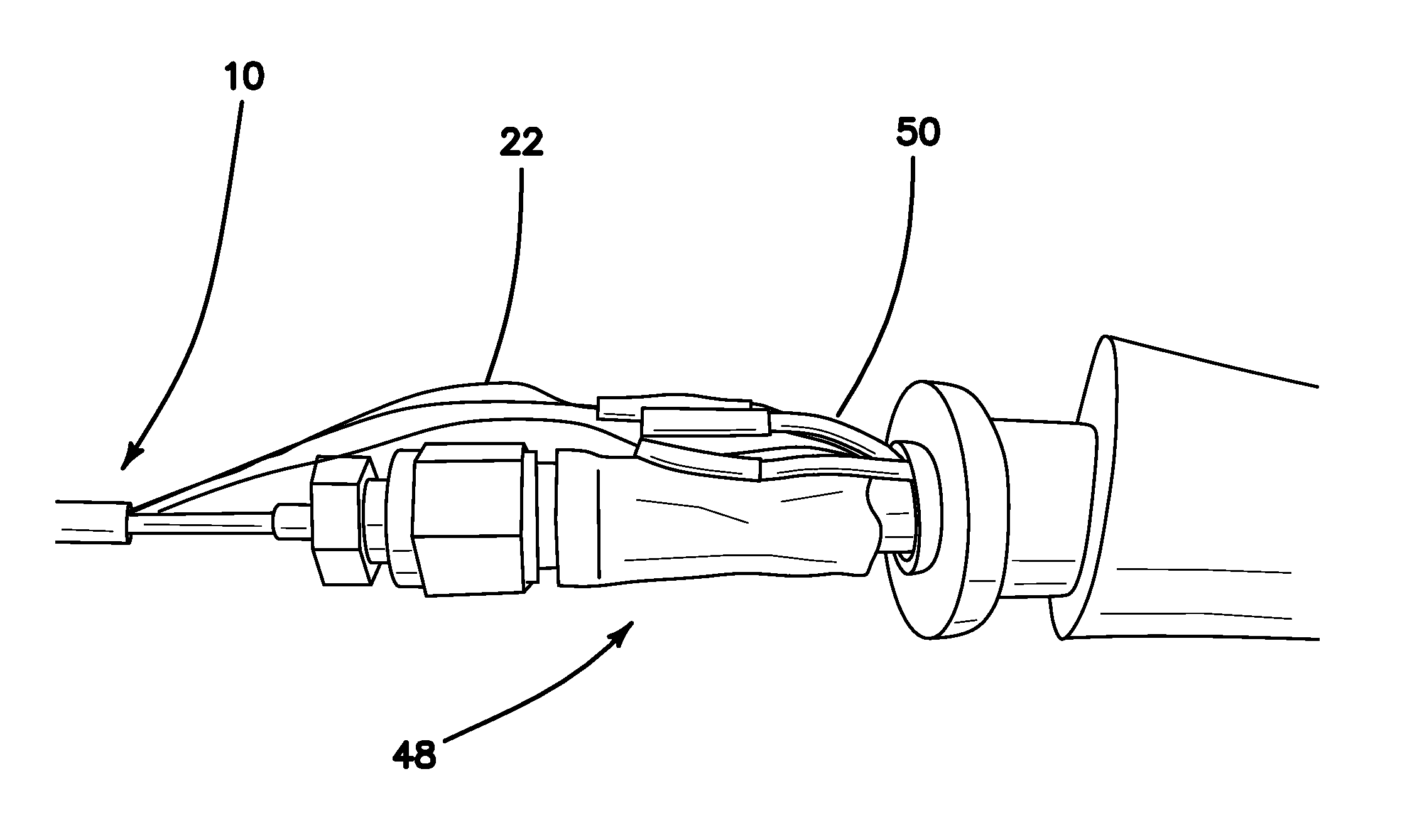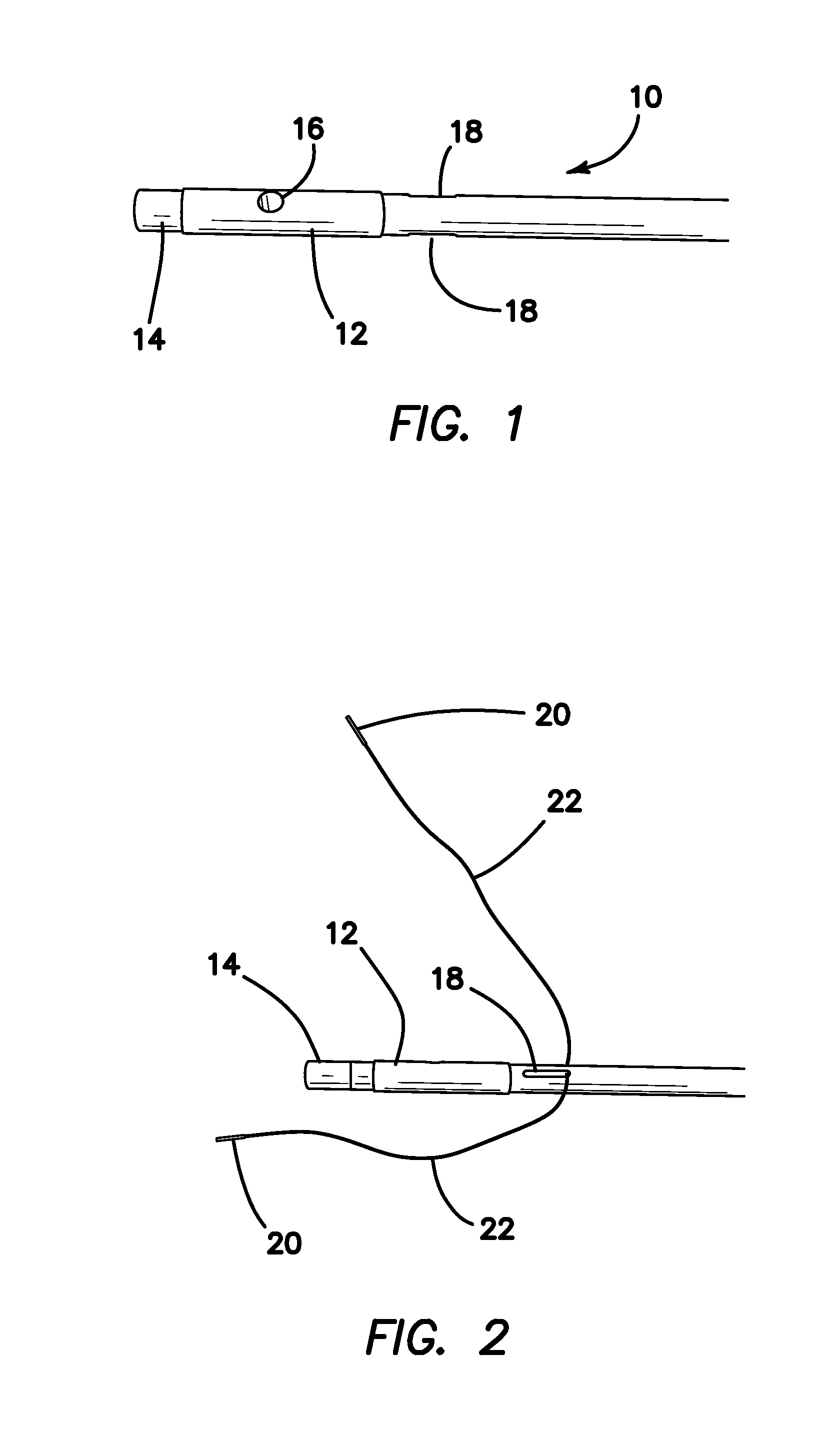Optimized method of coating the microwave ablation probe for surgical application
a microwave ablation and surgical technology, applied in the field of surgical microwave ablation probes, can solve the problems of local tissue burning instead of regional or uniform heating and uncontrolled current concentrations
- Summary
- Abstract
- Description
- Claims
- Application Information
AI Technical Summary
Benefits of technology
Problems solved by technology
Method used
Image
Examples
Embodiment Construction
[0034]One ablation system in which the probe could be used is substantially similar to that disclosed in U.S. Pat. No. 5,301,687 and U.S. Pat. No. 6,706,040, incorporated herein by reference.
[0035]FIG. 1 is a diagram showing the first step in the manufacture of the microwave ablation probe 10 of the invention, wherein the distal end of ablation probe 10. The probe 10 includes a hollow fiberglass tube 14 having an outer diameter of 2.3 mm and an inner diameter of 1.6 mm, serving as a core of the probe 10. In the illustrated embodiment probe 10 is 7.5 inch (19.05 mm) long. A metallic anode sleeve 12 made of Brass 260 Alloy is slid over the distal end of tube 14 and spaced 0.075±0.010 inch (1.905±0.25 mm) from the end. A 0.03 inch (0.762 mm) through-bore hole 16 is drilled or defined completely through anode 12 and tube 14. A pair of diametrically opposing slots 18 are defined through the walls of tube 14 extending from the proximal end of anode 12 for approximately 0.14 inch (3.56 mm)...
PUM
| Property | Measurement | Unit |
|---|---|---|
| Temperature | aaaaa | aaaaa |
| Temperature | aaaaa | aaaaa |
| Thickness | aaaaa | aaaaa |
Abstract
Description
Claims
Application Information
 Login to View More
Login to View More - R&D
- Intellectual Property
- Life Sciences
- Materials
- Tech Scout
- Unparalleled Data Quality
- Higher Quality Content
- 60% Fewer Hallucinations
Browse by: Latest US Patents, China's latest patents, Technical Efficacy Thesaurus, Application Domain, Technology Topic, Popular Technical Reports.
© 2025 PatSnap. All rights reserved.Legal|Privacy policy|Modern Slavery Act Transparency Statement|Sitemap|About US| Contact US: help@patsnap.com



